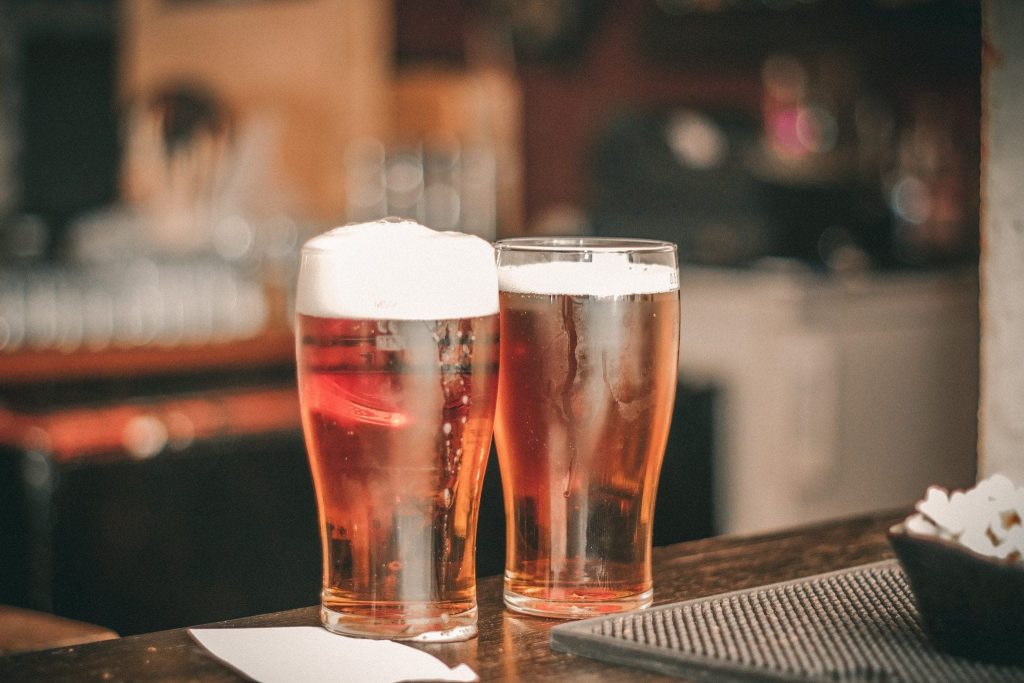A look behind New York State’s growing craft beer industry
Behind NY's growing craft beer industry

As the first phase of New York State’s Farm Brewing Laws comes to a close, craft brewers and farmers alike are seeing economic benefits statewide. Put in place by Gov. Andrew Cuomo in 2013, the law calls for beer to be made primarily from locally grown farm products in order to receive a Farm Brewery license.
The first phase requires breweries to use 20 percent of their hops, the flowers used as a flavoring and stability agent in beer, from farms located in New York. The legislation also requires 20 percent of all other brewing ingredients to be grown in New York as well.
“We really work hard to get everyone to support their local brewer,” said Paul Leone, the executive director of the New York State Brewers’ Association. “I think that’s the most important thing.”
The New York brewing industry is expanding, the number of craft breweries has increased by 286 percent since 2012, according to the December 2017 New York State Brewery Supply Chain Analysis.
New York State is the third largest holder of breweries in the country, with 420 breweries. Leone believes the law has been working well throughout the first phase, with half of those breweries now possessing a farm brewing license.
“It’s been a huge success,” Leone said. “Before the New York State Farm Brewing Law, the hops industry was pretty much dead and there was no malting industry. Today, there are nearly over 400 acres of hops in the ground. There are 13 malt houses in New York state, there are farmers that are planting malting barley. There are hops palletizers now. It’s really created a whole sub-industry on the agricultural side.”
That was the idea from the start, with the law being modeled after the successful New York Farm Winery Act of 1976, according to brewery owner and supporter David Katleski.
The Farm Winery Act had spurred the growth of wine production in New York, creating 261 farm wineries and tripling the number of wineries, according to Cuomo.
Katleski owns not only a brewpub in Syracuse but also Empire Farm Brewery of Cazenovia, the largest of its kind in New York State and entire East Coast. Katleski’s brewery boasts over 70,000 honeybees for honey production and a hops “nursery” to grow hop plants, complete with three acres of pale barley and beer garden.

The addition of “tasting rooms,” in their establishments allows Farm Breweries to open restaurants and conduct tastings, which aims to help breweries bring in more business.
Since 2015, malting barley production increased by 131 percent, while potential growing acres increased by 39 percent, according to the December 2017 Brewery Supply Chain Analysis.
It may be harder for farmers and brewers to produce the amount of malted barley needed when the 60 and 90 percent markers of the New York State Farm Brewing Law actually take effect, Katleski adds. Phase Two, ending in 2023, will require brewers to locally source 60 percent of hops and 60 percent of other ingredients. By the end of Phase Three in 2024, all New York farm breweries should be using 90 percent local hops and 90 percent ingredients grown in-state.
“It’s going to be nearly impossible at that time, to be an 100 percent farm brewery,” Katleski said of larger breweries. “Unless the malted barley industry and the hops industry catch up to that growth. They’re trying to right now.”
Katleski said he may try to make some adjustments to the laws if the demand for ingredients is too steep for growers to handle. Lowering the required percentages is one potential option, or allowing breweries to hold dual-licenses and requiring only certain styles of beers to fall under each category, as opposed to the brewery as a whole.
Farmers, growers and brewers all communicate often to try and improve the laws and logistics involved in both of the industries, he said.
“I would say it’s a success,” Katleski said. “It’s kind of forced the industry to react a lot faster than it’s capable of, but we’re doing our best.”





